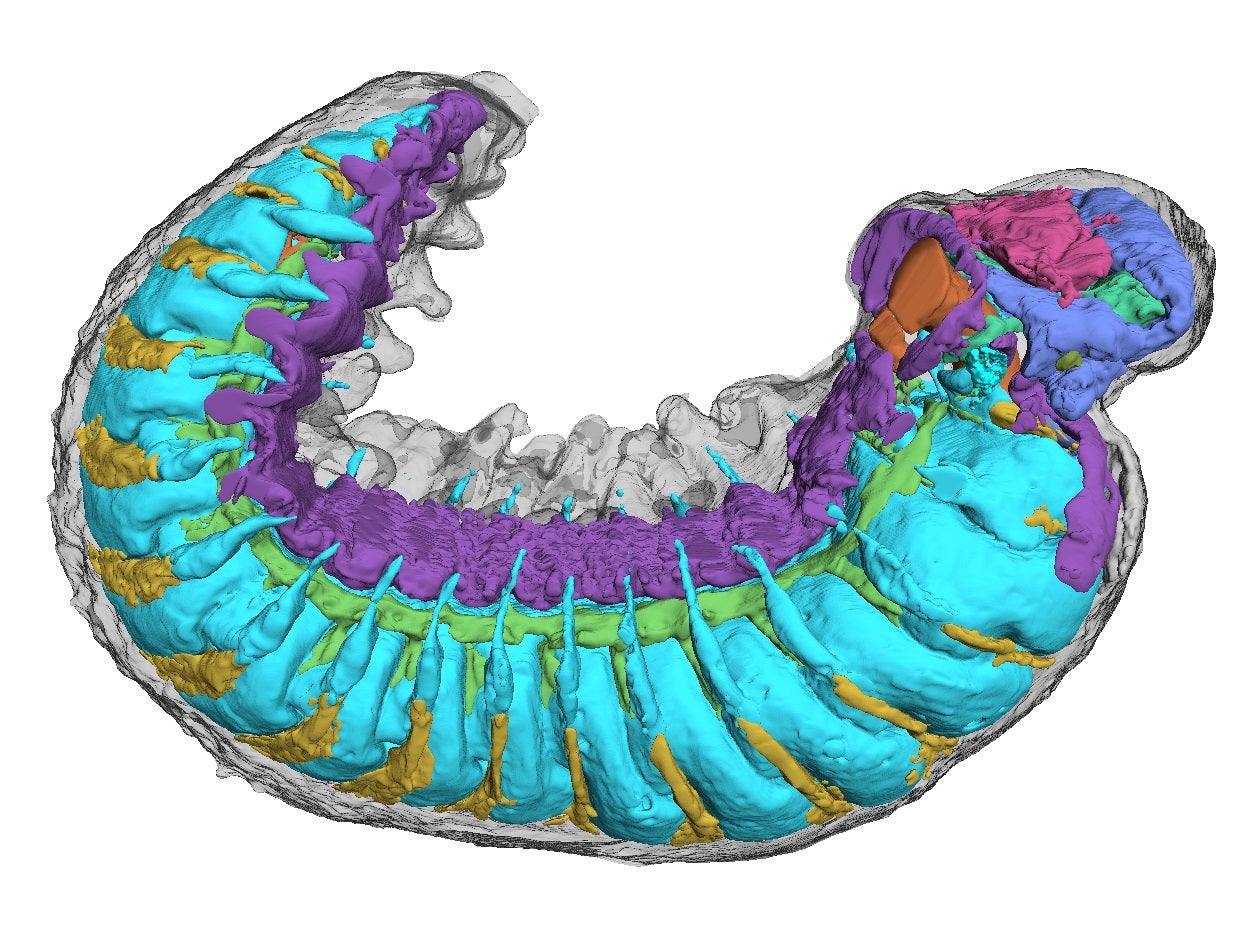A 520 million-year-old perfectly preserved creature is set to reveal secrets of evolution

A tiny creature that lived around half a billion years ago has been found almost perfectly preserved, with one scientist exclaiming his “jaw just dropped” while examining the exceptionally rare fossil.
Remains of the larva, about the size of a poppy seed, were unearthed in China with its internal organs almost intact.
The larva, named Youti yuanshi, dates back to 520 million years ago, around a time that a large diversity of life began to emerge on Earth, including many major animal groups alive today.
The team said this ancient creature “provides key clues” on how modern arthropods – a group of animals that includes insects, spiders, crabs and centipedes – evolved from worm-like ancestors.
Dr Martin Smith, of Durham University, described the finding as “something special”, saying the odds of uncovering fossils with tiny, fragile creatures is usually “practically zero”.
Although the specimen was tiny, scientists from Durham University were able to generate 3D images using advanced scanning techniques at the Diamond Light Source facility in Harwell, Oxfordshire.
Scans of the larva, thought to be one of the first arthropod ancestors, revealed several internal organs beneath the skin that managed to survive half a billion years.
This included parts of the brain, digestive glands, a primitive circulatory system and traces of nerves in the larva’s legs and eyes.

Dr Smith, who led the research, said: “When I used to daydream about the one fossil I’d most like to discover, I’d always be thinking of an arthropod larva, because developmental data are just so central to understanding their evolution.
“But larvae are so tiny and fragile, the chances of finding one fossilised are practically zero – or so I thought.
“I already knew that this simple worm-like fossil was something special, but when I saw the amazing structures preserved under its skin, my jaw just dropped – how could these intricate features have avoided decay and still be here to see half a billion years later?”
Scientists said this ancient larva is helping shed light on the evolutionary steps that simple worm-like creatures would have gone through to transform into arthropods with complex body structures we see today such as butterflies, beetles and centipedes.
While analysing the brain region of the larva, the researchers found a primitive structure known as protocerebrum – a precursor to the more sophisticated arthropod brain.
The level of complexity of anatomy shows these early arthropod-relatives were much more advanced than previously thought, the researchers said.
Dr Katherine Dobson, of the University of Strathclyde, said: “It’s always interesting to see what’s inside a sample using 3D imaging, but in this incredible tiny larva, natural fossilisation has achieved almost perfect preservation.”
The research is published in the journal Nature.
Join our commenting forum
Join thought-provoking conversations, follow other Independent readers and see their replies
Comments
Bookmark popover
Removed from bookmarks